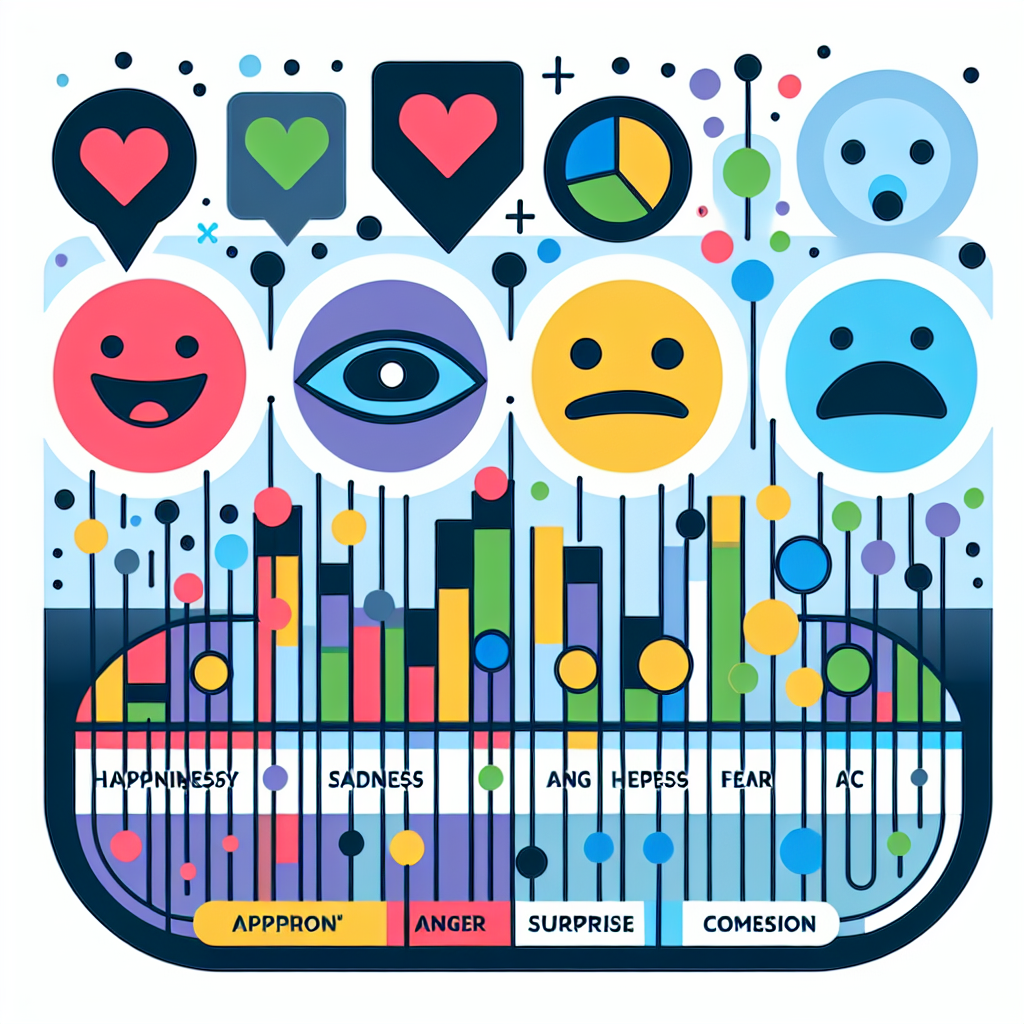
In the modern age of advanced technology, one of the revolutionary advancements in the field of Artificial Intelligence is Emotion Detection in voice calls. By leveraging machine learning algorithms and speech emotion recognition technologies, systems are now capable of identifying and interpreting human emotions during calls. This technology is not just phenomenal, but it adds a new dimension to the way we perceive and interact in customer service.
Emotion detection systems work by recognising and analysing various distinctive qualities in a speaker's voice such as tone, pitch, volume, and speed. The system uses these attributes to form a pattern that determines the emotional state of the speaker. Most commonly, it can detect emotions like joy, sadness, anger, fear, surprise, and disgust. These emotion detection technologies greatly rely on Natural Language Processing (NLP) and machine learning algorithms to accurately understand and interpret the emotional context of a conversation.

This intelligent application of AI in emotion detection is particularly outstanding in customer service; it aids in enhancing customer satisfaction significantly. When the system is trained to understand and react to a customer's emotions in a conversation, it can improve both the quality and effectiveness of the service. It enables companies to gain real-time insights about customer sentiments, which can serve to refine customer interaction, forge stronger relationships, and elevate customer satisfaction to an all-new level. Understanding customer emotions can enable companies to develop a more personalised approach towards customer service - aligning insights with immediate responses to customer needs.
Given these, it is undeniable that Emotion Detection has profound implications for future communication systems. It's not just about comprehending words anymore, but about perceiving emotions, ensuring a more human-centric approach to AI interactions. This elevates the traditional customer service model, making it more empathetic, dynamic, and responsive to individual customer needs.
However, like all evolving technologies, emotion detection also brings challenges and ethical considerations. As we continue to explore this exciting frontier, it becomes increasingly imperative to address these concerns with well-formulated policies and stringent privacy laws. Nonetheless, the potential benefits that emotion detection technology promises for enhancing customer satisfaction are far too impressive to halt its progress.
In the era of digital technology, customer service is no longer confined to the human realm. AI receptionist software is increasingly becoming the first point of contact for customers, revolutionizing the way businesses interact with their clientele. However, communication is more than just words – it’s tones, pauses, and emotions. This is where emotion detection, a significant branch of speech analytics, enters the scene.
How can businesses integrate emotion detection with their AI receptionist software? The process is straightforward, and the benefits, enticing.
First, you need to choose the right speech emotion detection software. This software uses various algorithms and techniques, including Natural Language Processing (NLP) and Machine Learning, to analyze and interpret emotions from voice data. Some solutions even offer real-time emotion detection, providing immediate valuable feedback.
Upon choosing the appropriate software, the next step is to integrate this solution with your AI receptionist software. With API integrations readily available, this process can be as simple as a copy-paste job. Refer to your chosen software’s API integration guides to make the process even smoother.
After successful integration, your AI software will now be equipped to collect and analyze the emotional cues and sentiments from voice calls. This will allow it not only to understand what the customer is saying, but how they are saying it.
Lastly, make the most of this added feature. Use the insights gained to enhance customer satisfaction. Proactively address detected frustration or delight your customer by responding to their happiness. This added layer of communication analysis will empower your AI software to make significantly more meaningful connections with the customer.
In a nutshell, integrating emotion detection into your AI receptionist doesn’t just enhance your software’s capabilities – it revolutionizes how your business communicates with its customers. While words can provide information, understanding emotions delivers insight – paving the path towards a more profound, more satisfying customer relationship.
In today's rapidly evolving technological landscape, emotive interaction is becoming increasingly crucial to the customer experience. Emotion detection in voice calls, also known as emotional analytics, can offer significant benefits, including improved customer interaction, personalized service, and heightened satisfaction rates. These tools are reshaping how businesses interact and engage with their customers, leading to more positive outcomes.

Drawing from both AI and psychology fields, voice call emotion detection goes beyond simple analysis of a customer's message—it seeks to understand the underlying emotions that drive the communication. When emotion detection technology is employed, it can interpret the caller's emotional states and sentiments in real-time, enabling the customer service representative to respond accordingly. This proves invaluable in fostering stronger connections between businesses and their customers.
By understanding the emotional context behind every customer interaction, these technologies allow for deeply personalized service. When customer representatives are alerted to the emotional state of the customer, they are able to tailor their approach, ensuring a more positive and individualized experience. Personalization in customer service has been demonstrated to greatly enhance customer loyalty and satisfaction.
Moreover, emotion detection in voice calls doesn't just improve individual interactions—it provides insights that can be used to better the overall customer experience. Analyzing aggregate emotional data can identify common issues that trigger negative responses, allowing companies to proactively address these matters. Ultimately, this leads to improved satisfaction rates. Studies show that businesses implementing emotional analytics see significant improvements in overall customer satisfaction.
Adopting emotion detection for voice calls, therefore, presents a promising stepping stone toward businesses' ultimate goal: delivering exceptional customer experiences that not only meet but exceed expectations. As technologies continue to evolve, the potential of emotional analytics in enhancing customer satisfaction is more compelling than ever.
In today's intensively competitive business environment, superior customer service is not a choice but an essential prerequisite for success. More frequently, businesses are utilizing the power of artificial intelligence (AI) to enhance their customer service processes. One revolutionary application of AI is in the realm of emotion detection during voice calls.
AI receptionists - also known as voice-based virtual assistants - play a powerful role in customer service, and emotion detection can greatly enhance their effectiveness. When AI receptionists have the capacity to detect and respond to a customer's emotional state in real-time, it can lead to more empathetic, personalized, and effective customer interactions. This enhanced communication can, in turn, significantly boost customer satisfaction.
The integration of emotion detection technology in voice calls involves advanced AI algorithms and machine learning methodologies which analyze the caller's tone, pitch, and speaking pattern. By using voice emotion detection AI, AI receptionists can pick up subtle cues about a customer's mood - whether they're happy, frustrated, confused or anything in between. The AI receptionist then adjusts its responses accordingly, delivering personalized assistance that resonates with the customer's emotional state.
Consider, for example, a customer who's reporting a problem in a frustrated tone. The AI receptionist, detecting the customer's emotion, would respond in a calm and reassuring tone, empathetically acknowledging the problem and offering effective solutions. On the other hand, a cheerful customer inquiring about a product might be greeted with a matching upbeat response, further enhancing their positive experience.
Importantly, as the AI receptionist gains more interaction experience, it can also learn to handle more complex scenarios with superior accuracy, thanks to the power of machine learning. This continual learning process ensures the AI system improves over time, consistently providing empathetic and highly effective customer service - a true testament to the remarkable potential of AI in emotion detection during voice calls.
Several organizations worldwide have reaped significant benefits by employing emotion detection technologies in their voice call systems. These include companies spreading across various industries, including banking, healthcare, and e-commerce. By applying these advanced technologies, these businesses have been able to significantly enhance their customer satisfaction metrics.
In the banking sector, several financial institutions have implemented emotion detection technologies in their customer service call centers to understand consumers' emotional state better. With this understanding, call handlers can tailor their responses accordingly, leading to a smoother, more satisfying interaction. One prominent bank reported a whopping 30% increase in customer satisfaction after the technology's deployment.

Similarly, the healthcare sector has seen beneficial adoption of emotion detection technologies. In an interesting case, a healthcare provider used this technology to better empathize with patients' states during their calls, leading to an enhanced patient experience.
The e-commerce industry, busy with high volumes of customer interactions daily, is another sector where emotion detection technologies have come in handy. Companies are now better able to understand, empathize, and deal with consumer emotion during live calls. In one e-commerce giant's case, there was a 20% boost in customer satisfaction post-implementation of this technology.
A common thread running through all these success stories is an increase in customer satisfaction. By accurately detecting emotion in voice calls, these companies have fostered an environment of empathy and mutual understanding that translates into heightened consumer satisfaction and business success.
Developments in the field of emotion detection, more precisely, in voice calls, wield immense potentials to enhance customer satisfaction. However, the implementation carries with it several challenges and ethical considerations. A primary concern stems from the sphere of privacy and consent. Privacy concerns arise as the technology demands recording, analyzing, and possibly storing individuals' emotional data, which can be deemed intimate and sensitive. The onus is on companies to ensure that customers are informed about and consent to the use of emotion detection during their interactions.
From a technical perspective, the accuracy of Emotion Artificial Intelligence (AI) is another challenge that needs to be addressed. Emotion AI's ability to correctly determine a person's emotional state can be influenced by many factors, including individual differences in speech and the context in which words are spoken. Misinterpretation of emotions can result in customer dissatisfaction rather than an improvement. Therefore, the exactness of Emotion AI is a vital area requiring continuous development and refinement.
Ethical considerations also need significant deliberation. There is a thin line between personalization, aiming for better service, and manipulation based on consumers' emotional data. Companies implementing such technologies must maintain a delicate balance to avoid ethical blunders that could potentially harm their reputation and relationship with their customer base.
Furthermore, the potential for bias in emotion detection algorithms is another hurdle. These biases could be in favor of certain genders, age groups, or linguistics and could lead to unfair treatment or misunderstandings. Scrutinizing for bias and correcting these discriminations in AI systems should be an area of consistent focus to ensure equitable service.
In conclusion, while emotion detection in voice calls presents immense potential to enhance customer experiences, these challenges and ethical considerations must be addressed. Awareness of these challenges can help businesses navigate more effectively in this evolving field, striking the right balance between technology use and ethical considerations when planning their customer service strategies.
Start your free trial for My AI Front Desk today, it takes minutes to setup!








